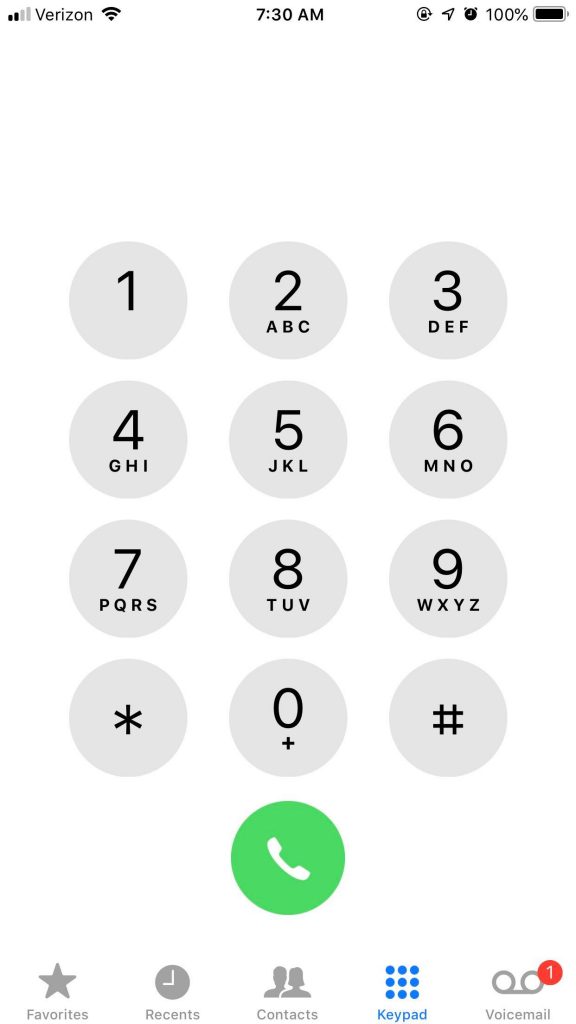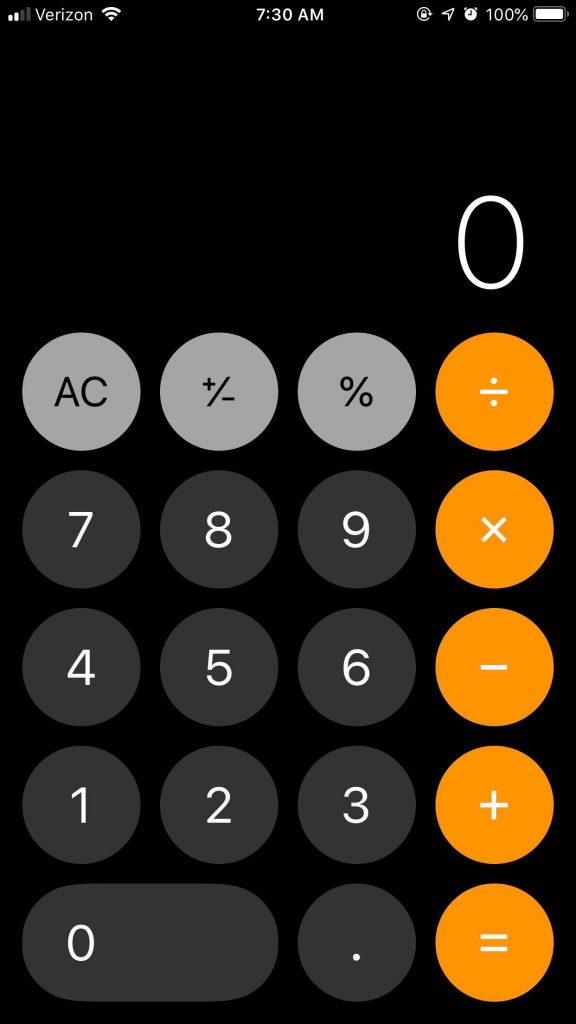Why You Can’t Make a Phone Call with a Calculator
Pictured below is a screenshot from an iPhone. It’s of one of the least-used features of what is, nominally, a phone — the phone’s keypad. Ignoring the fact that the owner has an unlistened-to voicemail, there’s nothing out of the ordinary about it.

Now, let’s take a look at another screenshot of another feature from the exact same iPhone — the calculator. Again, nothing out of the ordinary.

But compare the two and something’s amiss. The telephone keypad has the numbers in order from top to bottom, at least for one through nine. (Let’s not worry about zero and let’s totally ignore the asterisks and pound sign; those are a story for another day.) The calculator? It has the numbers flowing in the opposite direction, starting at the bottom and working their way up.
Why can’t our electronics be consistent?
What we know for sure is that the calculator keypad layout came first. Bell Labs developed the phone keypad for their new innovation, the touchtone phone, in the mid-1950s. Mechanical calculators at the time had already adopted a keypad layout similar to the one seen in the calculator screenshot above. But those calculators were rare — most households didn’t have one. As consumers weren’t already familiar with that layout, Bell decided to start from scratch. A team focused on usability tested many different designs and published their findings, here. Like the calculator, a layout of three columns of four rows was the most comfortable. But unlike the calculator, having the numbers run from low to high, zero notwithstanding, was the way to go.
And this differed from the direction that the adding machines employed. Why did the calculator world go high to low?
Some speculate that the research team at Bell Labs was similarly puzzled, if not concerned — the fact that an entire industry (and a scientific one at that) had gone in the opposite direction called Bell’s research into question. So they polled the various makers of such devices, asking what research they relied on in deciding their calculators’ layouts. And, as ABC News reports, they found out that these companies did no research on the question — the layout was arbitrary, and then everyone in the calculator biz just followed everyone else.
Bonus fact: In 1990, Texas Instruments released a graphing calculator called the TI-81, which — and you already know this if you a high school student around then — revolutionalized how kids took math exams. Standardized testing organizations at the time were beginning to allow students to use calculators on exams and the TI-81 was a very powerful one, but not so powerful that it was considered more akin to a full-scale computer. Even today, the Ti-81 and much of its progeny are permitted for use on the SAT. But there’s an exception. In 1995, Texas Instruments came out with their first calculator with a QWERTY keyboard — like the one computers have — called the TI-92. Per the College Board’s website (the organization that administers the SAT), students are “not allowed to use [. . .] models that have typewriter-like keypad” on the exam. That includes the TI-92. For that reason (and others), in 1998, Texas Instruments introduced the TI-89, which Wikipedia described as “essentially a TI-92 Plus with a limited keyboard and smaller screen.”
From the Archives: Let’s mix it up with a quiz: What country is being dialed? (Keypad image provided.)
